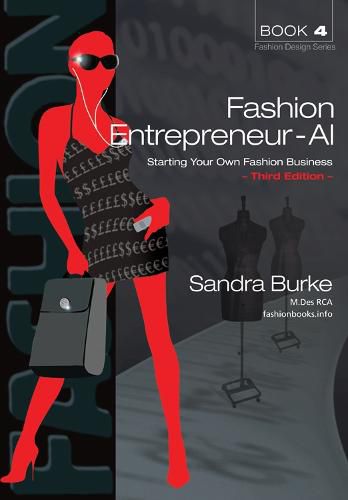Readings Newsletter
Become a Readings Member to make your shopping experience even easier.
Sign in or sign up for free!
You’re not far away from qualifying for FREE standard shipping within Australia
You’ve qualified for FREE standard shipping within Australia
The cart is loading…






FASHION ENTREPRENEUR, now in its 3rd EDITION, is essential reading for those planning to set up and run a successful business within the fashion and creative industries.
This book guides the reader through the process of creating a fashion business (including online businesses); spotting and exploiting opportunities, networking to build a personal network of useful contacts, writing a business plan, branding and marketing, and managing a business on a day-to-day basis.
The theory is presented as a step-by-step guide, packed with case studies and interviews, inspiring fashion illustrations, diagrams and imagery from established fashion entrepreneurs to enhance the understanding of the subject area.
New Chapter - A special feature of this third edition is a new chapter on Fashion Artificial Intelligence, which shows how AI techniques are used to enhance the Fashion Design Process and is structured around the Fashion Internet of Things (IoT). These innovative technologies (AI and IoT) are important aspects of the whole Fashion process. This chapter presents:
Sandra has peppered each section with her personal international experience of working in all areas of the fashion industry.
As we enter the early stages of the fourth industrial revolution (4IR), Artificial Intelligence (AI) and smart digital technology is adding another important capability to the Creative Industries including those in; Fashion and Textile Design, Manufacturing and Distribution, Sales, Marketing and Branding, and Fashion Retail.
Fashion schools were quick to incorporate 2D computing software such as Illustrator, Photoshop and Lectra into their syllabus, the challenge now is to embrace the latest cyber-physical machines (such as 3D printing) and AI techniques to enable students to lead the transformation with, for example, digital twin humans (avatars), intelligent marketing, customer-centric manufacturing, predictive analytics and virtual fitting rooms.
$9.00 standard shipping within Australia
FREE standard shipping within Australia for orders over $100.00
Express & International shipping calculated at checkout
FASHION ENTREPRENEUR, now in its 3rd EDITION, is essential reading for those planning to set up and run a successful business within the fashion and creative industries.
This book guides the reader through the process of creating a fashion business (including online businesses); spotting and exploiting opportunities, networking to build a personal network of useful contacts, writing a business plan, branding and marketing, and managing a business on a day-to-day basis.
The theory is presented as a step-by-step guide, packed with case studies and interviews, inspiring fashion illustrations, diagrams and imagery from established fashion entrepreneurs to enhance the understanding of the subject area.
New Chapter - A special feature of this third edition is a new chapter on Fashion Artificial Intelligence, which shows how AI techniques are used to enhance the Fashion Design Process and is structured around the Fashion Internet of Things (IoT). These innovative technologies (AI and IoT) are important aspects of the whole Fashion process. This chapter presents:
Sandra has peppered each section with her personal international experience of working in all areas of the fashion industry.
As we enter the early stages of the fourth industrial revolution (4IR), Artificial Intelligence (AI) and smart digital technology is adding another important capability to the Creative Industries including those in; Fashion and Textile Design, Manufacturing and Distribution, Sales, Marketing and Branding, and Fashion Retail.
Fashion schools were quick to incorporate 2D computing software such as Illustrator, Photoshop and Lectra into their syllabus, the challenge now is to embrace the latest cyber-physical machines (such as 3D printing) and AI techniques to enable students to lead the transformation with, for example, digital twin humans (avatars), intelligent marketing, customer-centric manufacturing, predictive analytics and virtual fitting rooms.